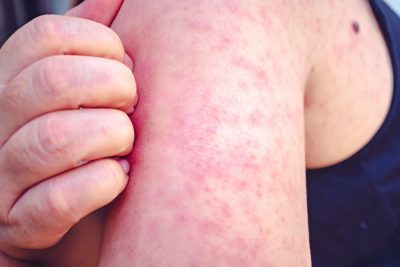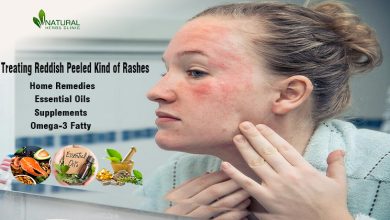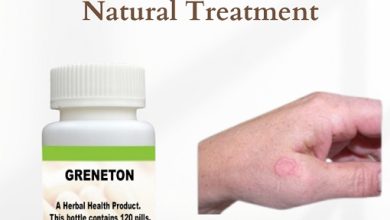Yellowish or Skin-Colored to Red, Thickened Bumps and Firm

Worried about red bumps on your skin? Learn about the causes and treatments for thickened, yellowish or skin-colored to red bumps that are firm to the touch.
Common Characteristics of Granuloma Annulare – Yellowish or Skin-Colored to Red, Thickened Bumps and Firm
Granuloma Annulare is a common skin condition that usually appears as a rash with yellowish or skin-colored raised bumps. The raised bumps are firm and thickened in texture which can cause discomfort for those who experience it. This condition can be unsightly and sometimes painful for some people but there are treatments available that can provide relief from the symptoms. The most common symptom of Granuloma Annulare is a red or yellowish ring with thickened bumps surrounding it. The ring may be raised or appear flat on the skin and is usually found on the hands, feet, elbows, or ankles but can also occur anywhere on the body. In some cases, the rash may spread to other areas of the body. Additionally, there may be itching or slight burning sensation associated with this rash. It is important to note that Granuloma Annulare is not contagious and does not spread from person to person contact. However, anyone who has had this condition should not share personal items such as towels or clothing with another person as this can cause further irritation to their skin.
Related Article; Lesions May Be Present for Years Lets Uncover Hidden Truths
Diagnosis of Granuloma Annulare usually requires a physical examination by a doctor along with lab tests if needed. This allows them to confirm if it is indeed Granuloma Annulare and then determine the best treatment plan for each individual’s case. Generally speaking, most cases of Granuloma Annulare will go away without any treatment but this can take months or even years depending on the severity of symptoms. For those who wish to have faster relief from their Granuloma Annulare symptoms, various treatments are available including topical medications such as corticosteroids which help reduce inflammation, ultraviolet light therapy which helps clear up rashes more quickly than natural healing alone, and oral medications such as retinoids which help reduce itching sensations associated with this condition. In more severe cases where none of these treatments provide results, doctors may suggest surgery where small parts of the affected area are removed in order to reduce discomfort and improve appearance in those areas. No matter what treatment plan is chosen for an individual’s case of Granuloma Annulare, it’s important to follow all instructions given by your doctor closely in order to ensure best results as well as avoid any potential side effects from any medications used in treatment.
Diagnosing and Treating Granuloma Annulare – The Best Options for You
Granuloma annulare is a skin condition that often presents as yellowish or skin-colored to red, thickened bumps and firm. It may occur anywhere on the body, but it is usually seen on the hands, feet, or elbows. While it is not a serious disorder, it can be bothersome and cause anxiety. Diagnosis of granuloma annulare requires a thorough physical exam to rule out any other potential causes for the Yellowish or Skin-Colored to Red. If granuloma annulare is suspected, additional tests may be performed to confirm the diagnosis, such as a biopsy.
Related Article; Proven Granuloma Annulare Recovery Strategies for Itchy Relief
The best treatment for Granuloma Annulare depends on several factors including how widespread the Yellowish or Skin-Colored to Red are and how long they have been present. Topical medications are often prescribed first; these include steroids and calcipotriol ointment. However, if topical treatments are not effective or if there are too many Yellowish or Skin-Colored to Red to treat with topical medications, oral retinoids may be prescribed. In some cases laser therapy may be used to reduce the number of lesions.
Surgery is rarely required in cases of granuloma annulare but can be used if necessary when other treatments have been ineffective or when there is concern about malignancy. Furthermore, self-care measures should be taken to help minimize any discomfort associated with Granuloma Annulare such as avoiding triggers that can worsen symptoms such as contact with irritants and allergens.
It is important to keep in mind that Granuloma Annulare can recur even after successful treatment so regular follow-ups with your dermatologist are recommended. With proper diagnosis and treatment options available, you can manage your Granuloma Annulare symptoms effectively.
Tips for Living with Granuloma Annulare and Preventing Future Outbreaks
Granuloma Annulare is a skin condition characterized by yellowish or skin-colored to red, thickened bumps and firm, ring-shaped lesions. It can appear on any part of the body but is often seen on the hands, feet, elbows, and knees. With proper treatment, the lesions can heal quickly. Here are some helpful tips for living with Granuloma Annulare and preventing future outbreaks:
Related Article; From the Comfort of Home: Treating Granuloma Annulare with Greneton
Start Treatment Immediately
If you notice any symptoms of Granuloma Annulare, it’s important to begin treatment as soon as possible. The Best Treatment for Granuloma Annulare in most cases is topical corticosteroids applied directly to the affected area of skin. Eventually, the lesions should fade away once your treatment is complete. However, if your condition does not respond to treatments like topical corticosteroids, your doctor may recommend a different approach such as phototherapy or oral medications.
Related Article; Granuloma Annulare Vitamin D: Your Newest Weapon Against Ringed Red Bumps
Manage Stress Level
Stress can exacerbate symptoms of Granuloma Annulare so it’s important to manage your stress levels. If you find yourself feeling overwhelmed or stressed out by life’s demands, consider activities like yoga or meditation that can help reduce stress. Additionally, making sure you get enough sleep each night can also help lower stress levels.
Protect Yourself From Sun Exposure
Extreme sun exposure can worsen symptoms of Granuloma Annulare so it’s important to protect yourself from sunburns when outdoors for long periods of time. Make sure to apply sunscreen that has an SPF rating of at least 15 before going outside and wear protective clothing such as hats or scarves if you plan on being out in the sun for extended periods.
Related Article; Treating Reddish Peeled Kind of Rashes: Essential Guide for Skin
Keep Skin Clean and Dry
Keeping your skin clean and dry is also important for preventing future outbreaks of Granuloma Annulare. Make sure to cleanse any affected areas every day with a gentle cleanser and avoid using harsh soaps or exfoliants that could irritate your skin further. In addition, use an oil-free moisturizer after washing to help keep skin hydrated without clogging pores.
Living with Granuloma Annulare doesn’t have to be difficult if you follow these simple tips and take steps towards managing stress levels and protecting yourself from sun exposure. With appropriate treatments like topical corticosteroids applied directly to the affected area of skin combined with lifestyle changes including skincare practices like cleansing regularly and avoiding harsh soaps/exfoliants overtime you should be able to keep symptoms at bay and prevent future outbreaks from occurring.




